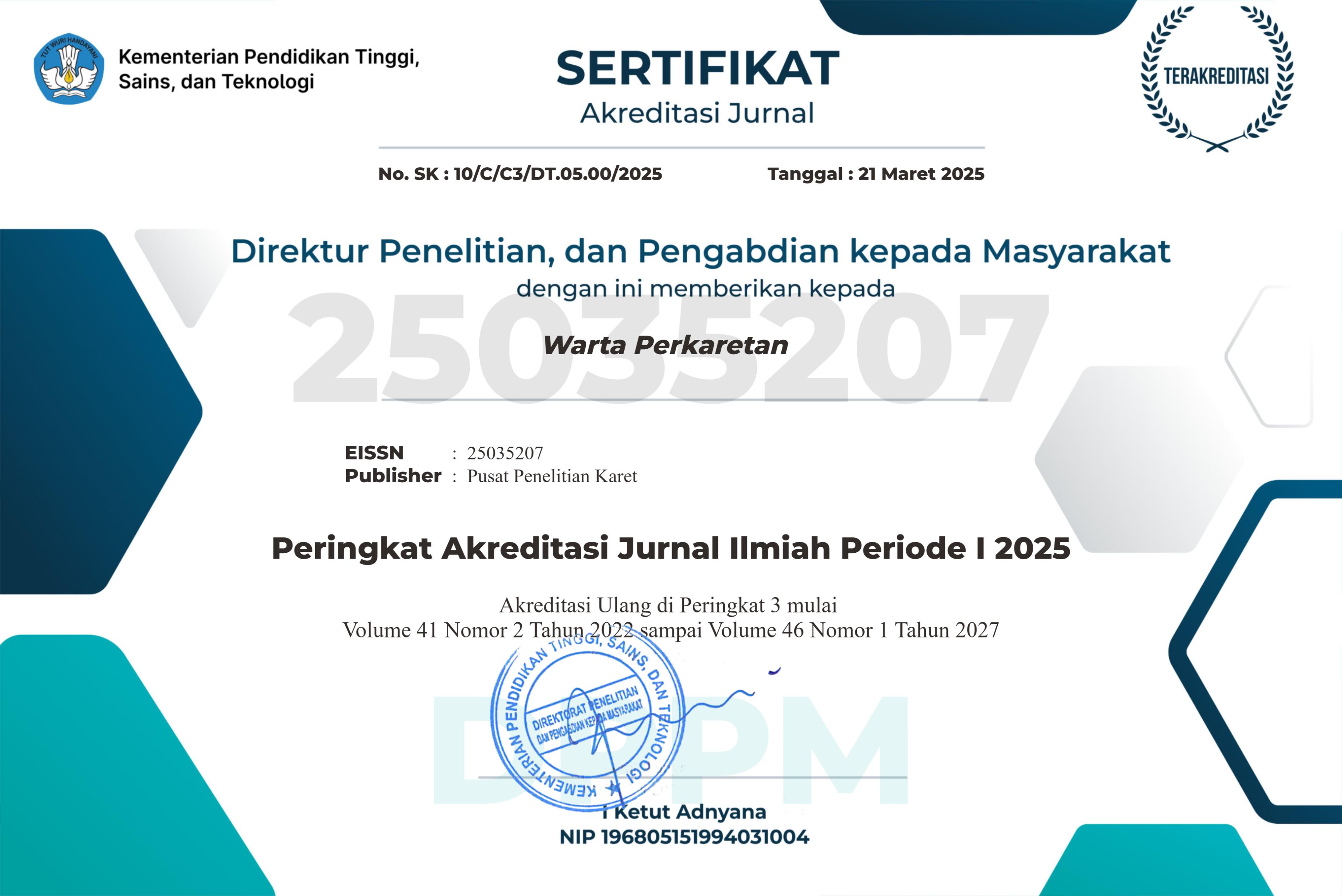PEMANFAATAN LIMBAH BAN BEKAS DENGAN MENGGUNAKAN TEKNOLOGI PIROLISIS
DOI:
https://doi.org/10.22302/ppk.wp.v31i2.272Keywords:
Limbah ban, proses pirolisis, pirolisis ban, karetAbstract
Pertumbuhan industri otomotif yang semakin pesat mengakibatkan peningkatan permintaan ban kendaraan, sehingga menyebabkan peningkatan jumlah limbah ban bekas. Oleh karena ban bekas sangat sulit terdegradasi oleh alam, maka diperlukan suatu teknik untuk mengatasi permasalahan ini. Salah satu cara untuk menangani limbah ban bekas adalah dengan mendegradasi secara thermal melalui proses pirolisis. Proses pirolisis adalah degradasi thermal suatu bahan dengan sedikit atau tanpa oksigen yang dilakukan pada temperatur tinggi sekitar 300 – 900 0C.  Limbah ban bekas yang diperoleh dari proses buffing (proses penghalusan) pada pabrik vulkanisir ban mengandung karet dan bahan kimia karet seperti : karet alam, karet sintetis, filler (pengisi) seperti Carbon Black, Sulfur, Zinc Oxide, Processing Oil, Accelators, dll. Produk dari proses pirolisis limbah ban bekas berupa fase padat, cair dan gas. Fase padat adalah berupa arang (char), sedangkan fase cair dan fase gas berupa minyak (Oil) dan senyawa yang tidak terkondensasi (Pyro-gas). Produk cairan pirolisat dapat digunakan sebagai bahan baku dalam berbagai aplikasi industri seperti industri pelarut, resin, lem, dan dispersing agent untuk pigmen warna. Produk padat berupa arang (char) dapat digunakan sebagai bahan bakar padat atau dapat sebagai arang aktif (activated carbon) yang digunakan dalam unit pemurnian air (water purification unit), sedangkan produk gas dapat digunakan sebagai sumber bahan bakar pada proses pirolisis.
Downloads
Published
How to Cite
Issue
Section
License
Copyright (c) 2016 Warta Perkaretan

This work is licensed under a Creative Commons Attribution-NonCommercial-ShareAlike 4.0 International License.
Submission of a original research or review articles in Warta Perkaretan implies that the submitted  manuscript has not been published in any scientific journal (except being part of the abstract, thesis, or report). The submitted manuscript also is not under consideration for publication elsewhere. All co-authors involve in the publication of the manuscript should give their approval. Once, the manuscript is accepted and then published in Warta Perkaretan, the Author(s) keep hold the copyright and retain publishing right without restrictions. Author(s) and Warta Perkaretan users are allowed to multiply the published manuscript as long as not for commercial purposes. The journal users are also permissible to share the published manuscript with an acknowledgement to the Author(s). The Editorial Boards suggest that the Authors should manage patent before publishing their new inventions.







